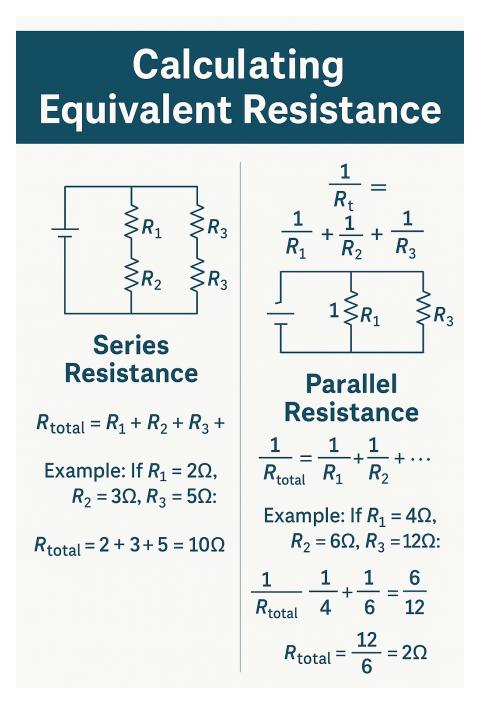⚡ If you’re a student, hobbyist, or engineer, this equivalent resistance calculator guide will help you grasp the concept and quickly determine the total resistance using formulas, examples, and our interactive calculator.
🙋 What Is Equivalent Resistance?
Equivalent resistance is the total resistance of a circuit that can replace a group of resistors with a single resistor, without changing the overall current or voltage.
There are two main ways resistors can be connected:
- Series – resistors are connected end to end
- Parallel – resistors are connected across the same voltage
🔌 Equivalent Resistance in Series
In a series circuit, the resistors simply add up:
R_total = R₁ + R₂ + R₃ + ...Example: If you connect 3 resistors of 2Ω, 3Ω, and 5Ω in series:
R_total = 2 + 3 + 5 = 10Ω🧩 Equivalent Resistance in Parallel
In a parallel circuit, the reciprocal of the total resistance is the sum of reciprocals:
1 / R_total = 1 / R₁ + 1 / R₂ + 1 / R₃ + ...Example: If you connect 3 resistors of 4Ω, 6Ω, and 12Ω in parallel:
1 / R_total = 1/4 + 1/6 + 1/12 = (3 + 2 + 1)/12 = 6/12
R_total = 12 / 6 = 2Ω
✨ Tips for Working with Resistors
- Use a multimeter to verify resistance
- Keep units consistent (all in ohms)
- Remember: series = simple addition, parallel = reciprocal rule
- Label resistors in your diagrams to avoid confusion
🌐 Real-World Applications
- Designing circuits in electronics and robotics
- Troubleshooting household wiring
- Calculating power loads in smart home systems